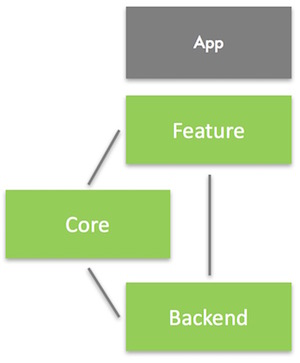The Qt IVI Simulation System
When developing new APIs, it is not always a given that a particular service already exists for this API. Often the API is already designed while the service itself is still in development. E.g. For new concepts like autonomous driving, the UI interaction and its API is already designed while the autonomous drive service is not ready yet. This development cycle requires the need to split the development of APIs and the actual service. The Dynamic Backend System provides an architecture to enable this split.
The next step for the API development is a good way to simulate a similar behavior like the original service. The Qt IVI Simulation System enables the following use cases:
- Easy to define simulation logic in QML
- Flexible system to provide a simulation for any C++ API
- Split between simulation data and simulation logic
- Override mechanism to change the simulation at runtime (e.g. for autotests)
- Integrated in the IVIGenerator autogenerator tooling
Overview
Because the simulation system builds on top of the Dynamic Backend System, the API split follows the same schema:

Every backend plugin needs to implement the backend interface to provide the needed functionality to the frontend: E.g. The QIviClimateControlBackendInterface class for the QIviClimateControl frontend API.
In the backend, every call from the frontend get forwarded to QML, where a simulation behavior can be scripted easily.

QML API
The core part of the Qt IVI Simulation System is the QIviSimulationEngine. It is an extended QQmlApplicationEngine which provides extra functionality to glue C++ and QML logic together.
Every backend uses its own simulation engine to keep the frontend and backend QML code separated. To provide an easy binding between QML and C++ objects, the C++ instance needs to be registered with the QIviSimulationEngine under a certain name. The engine creates a proxy object for every registered C++ instance and provides it as a QML type to QML. These types can be used to provide the behavior for functions or to update properties.
More detailed documentation about how to work with the simulation engine can be found here
Data / Logic Split
Using the simulation system it is possible to separate the simulation business logic from the actual simulation data. The simulation data can be stored in JSON files and is loaded by the QIviSimulationEngine::loadSimulationData() function. Once the simulation data is loaded, the content is provided to all simulation QML files via the IviSimulator global object.
E.g. to read only the data for a specific interface the IviSimulator::findData function can be used:
property var settings : IviSimulator.findData(IviSimulator.simulationData, "QIviClimateControl")
Boundary Checks
The IviSimulator global object also provides additional functions to make boundary checks easier. The boundaries of properties can be defined in the JSON files while the QML code stays generic to work with multiple different boundary checks:
function setAirConditioningEnabled(airConditioningEnabled) {
if (IviSimulator.checkSettings(airConditioningEnabled, settings["airConditioningEnabled"])) {
console.log("SIMULATION airConditioningEnabled changed to: " + airConditioningEnabled);
backend.airConditioningEnabled = airConditioningEnabled
} else {
setError("SIMULATION changing airConditioningEnabled is not possible: provided: " + airConditioningEnabled + " constraint: " + IviSimulator.constraint_string(settings["airConditioningEnabled"]));
}
}The IviSimulator::checkSettings() function is used to check the provided airConditioningEnabled argument against the boundaries defined in the JSON data. If the value is within the boundaries the value will be updated, otherwise an error is returned which also provides the constraint in a human readable form.
Please see the global object documentation for more information about the usage and the simulation data format.
Overriding Mechanism
For app development or unit testing it is often useful to trigger a certain behavior of a backend. E.g. when implementing message boxes for error recovery, the app developer wants a way to easily trigger this exact error condition. The simulation behavior provided by the backend developer might not be sufficient for this usecase.
Because of this the Qt IVI Simulation System provides an override system to load your own simulation behavior- or data- file by setting an environment variable.
Every QIviSimulationEngine can have an additional identifier which can be used to override the default behavior- or data- file using the following environment variables:
QTIVI_SIMULATION_OVERRIDE=<identifier>=<file>[;<identifier>=<file>] QTIVI_SIMULATION_DATA_OVERRIDE=<identifier>=<file>[;<identifier>=<file>]
Ivigenerator Integration
The simulation system is already integrated into the ivigenerator autogenerator tooling and it will automatically be used when generating code with the backend_simulator format.
The autogenerated plugin will use the qface module name as the QIviSimulationEngine identifier to allow overriding at runtime.
All boundary annotations defined in config_simulator will be transformed into a JSON file and embedded as a resource file into the backend.
For every interface, a QML simulation file will be created which provides a default implementation for checking the boundaries of every property.
Define your own simulation files
As it is not always convenient to use the autogenerated QML simulation files, you can also define your own QML file by using the simulationFile annotation.
Note: When your qface file provides multiple interfaces, the provided simulation file should also provide a simulation for all interfaces.
To reuse the autogenerated simulation files, you can either load them using an QML import statement like this:
import 'qrc:/simulation/'
or provide your own simulation file in a resource file using the 'simulation' prefix.
Afterwards you should be able to load the autogenerated simulation files like every other QML file.
© 2020 The Qt Company Ltd. Documentation contributions included herein are the copyrights of their respective owners. The documentation provided herein is licensed under the terms of the GNU Free Documentation License version 1.3 as published by the Free Software Foundation. Qt and respective logos are trademarks of The Qt Company Ltd. in Finland and/or other countries worldwide. All other trademarks are property of their respective owners.
